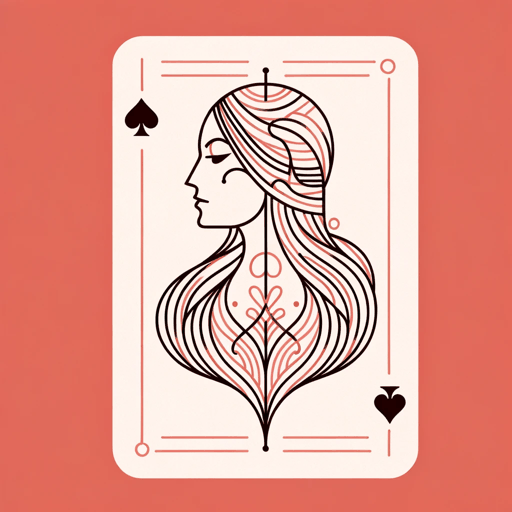21 pages • 42 minutes read
Alexander PushkinThe Bronze Horseman
Fiction | Poem | Adult | Published in 1841A modern alternative to SparkNotes and CliffsNotes, SuperSummary offers high-quality Study Guides with detailed chapter summaries and analysis of major themes, characters, and more.
Summary and Study Guide
Overview
The Bronze Horseman: A Saint Petersburg Story is a narrative poem by 19th-century Russian poet, dramatist, and novelist Alexander Pushkin, who is considered Russia’s greatest poet. It was written in 1833, but was not published until 1841, after Pushkin’s death due to censorship of Pushkin’s works by the Russian government.
Regarded as one of Pushkin’s most accomplished works, The Bronze Horseman has had a marked influence on Russian literature. The poem tells of the founding of Saint Petersburg—Russia’s cultural and artistic capital—in 1703 by Tsar Peter the Great, who ruled Russia from 1682 to 1725. The poem also focuses on a tragic event in the city’s history, the great flood of 1824. Another feature of the poem is the Bronze Horseman: a statue of Peter the Great, which was completed in 1782. The poem uses the building of Saint Petersburg on the marshy banks of the Neva River, and the city’s history and place in the development of Russia, to explore themes such as human conflict with nature and the clash between collective and state interests and the welfare of individuals.
Poet Biography
Alexander Pushkin was born into an aristocratic family on May 26, 1799, in Moscow, Russia. From 1811 to 1817 he attended a school for privileged children in Saint Petersburg, then the capital of Russia, where he showed an interest in literature. At the school, he excelled at writing poems, completing about 130 as a student.
Pushkin’s first narrative poem, a romance titled Ruslan and Liudmila, was published in 1820, when he was 21 years old. Some of his other poetry, however, had a revolutionary flavor, which offended authorities; as punishment, Pushkin was sent away from the capital to southern Russia in 1820. Working as a minor government official, he wrote The Prisoner of the Caucasus (1820-21), a narrative poem that was heavily influenced by English Romantic poet Lord Byron. In 1823, he was transferred to Odessa, a port city on the Black Sea, but the following year, the government suspected him of being an atheist and sent him into exile on his mother’s estate Mikhailovskoye, in northern Russia. The two years he spent there were a productive period for Pushkin, during which he wrote the tragedy Boris Godunov and Count Nulin, a comic narrative poem.
In 1826, after a personal meeting with Tsar Nicholas I (1796–1855), Pushkin was released from exile. The tsar promised to be Pushkin’s personal censor, which Pushkin thought would free him from more onerous bureaucratic censorship. This proved not to be the case: Pushkin still had to ask permission before publishing anything or traveling. In 1830, he did, however, receive permission to publish Boris Godunov. That year he also wrote the five short stories that make up The Tales of Belkin, the narrative poem “The Little House in Kolomna,” and Eugene Onegin a novel in verse that remains one of his most famous works.
In 1831, Pushkin married 16-year-old Nathalie Goncharova, who was already a socialite renowned for her beauty. They had three children together, although the marriage was not happy. Pushkin experienced financial difficulties during the 1830s, and he wrote less poetry, though The Bronze Horseman is a product of this period. In 1836, Pushkin founded the literary magazine The Contemporary, which championed among others the work of another Russian literary master, Nikolai Gogol.
Pushkin’s life was cut short by tragedy. His wife continued to have many admirers after marriage. One of them was a French émigré, George-Charles d’Anthès. Angered by rumors of an affair, Pushkin challenged d’Anthès to a duel, which took place on January 27, 1837. d’Anthès was slightly wounded, but Pushkin, who was shot in the stomach, died two days later on January 29.
Poem Text
Pushkin, Alexander. The Bronze Horseman. 1833. Translated by John Dewey. Translation & Literature (7.1: 1998, pp. 59-71)
Summary
The poem consists of nearly 500 lines and is divided into three sections: an Introduction, Part One, and Part Two.
In the Introduction, an unnamed man (later identified as Peter the Great) stands on the marshy banks of the Neva River and conceives his desire to build the city of Saint Petersburg. The only things there now are a few fishermen’s huts surrounded by forest. The man envisions a city that will protect Russia against potential enemies such as Sweden; people from all nations will come as guests.
A century later, the city has replaced marsh and forest. The city is impressive and architecturally stunning, with large mansions, towers, and a flourishing port where ships from all over the world dock. The river banks are now encased in granite and edged by bridges and gardens; Saint Petersburg is even more splendid than Moscow.
The poem’s speaker loves the city that Peter the Great built. The speaker enjoys sitting in his room at dusk, reading and writing. He loves the cold winter, when he watches the sledges on the frozen river. He loves going to balls or bachelor dinners where the drinks flow freely. He also loves it when the city is on a war footing, and soldiers and horses assemble and flags fly. He loves to hear guns roaring in military salute when the empress gives birth to a son, or when Russia celebrates a war victory.
Addressing the city directly, the speaker tells it to be steadfast so that it continues to subdue the elements, and so that the waters of the Gulf of Finland cannot trouble it. Then he recalls a bad event that happened to the city in the paSaint.
In Part One, heavy rain falls on the city one November night. A young man named Yevgeny returns home from his friends’ house. He is a poor clerk who works in an office. That night he lies awake, worried about his financial straits and lack of opportunity—his life is so unlike that of aristocrats, who have wealth and ease even though they do nothing to deserve it. Yevgeny is also aware that the river is rising in the storm and the city may get cut off, in which case he will not be able to see his girlfriend Parasha. He dreams of marrying her. Finally, he falls asleep.
At dawn, the city floods. People flee their homes as the water rises waist-high. Houses are ruined and coffins float down the streets, released from the graveyard by the water.
Tsar Alexander, in somber mood, surveys the destruction of the city. Even the palace is affected by it, and the tsar sends out men by boat to save as many people as they can. Yevgeny sits on one of two lion statues in Peter’s Square, gazing into the distance, trying to make out the cottage where Parasha lives with her widowed mother. All he sees is water everywhere. Behind him stands the statue of Peter the Great on a horse.
In Part Two, the flood is receding. Yevgeny runs to the still-raging river and hires a boat. The boatman steers through rough waters to the other shore. Yevgeny runs to where Parasha lives. Devastation is everywhere: Houses have been destroyed, and corpses lie in the street. Yevgeny can find no trace of Parasha’s home.
By dawn, the flood has receded and the city is calm again. The streets are filled with people going about their business. Yevgeny, however, can find no peace. For weeks he wanders around, distraught. One summer night, sleeping on the embankment, he is awakened by rain and wind, sounds that bring the fateful night of the flood back to him. He goes to Peter’s Square and contemplates the statue of Peter. Yevgeny is filled with anger, blaming Peter the Great for building the city on the marsh and therefore liable to flood. He curses and threatens the former tsar and runs off. Suddenly, he hears horse hooves behind him. Yevgeny thinks that the statue is chasing him and tries to escape. The chase goes on all night. From that day on, whenever he returns to the square, Yevgeny feels fear and anguish.
As a result of the flood, a battered cottage floated out to a small island. (It is implied, although not explicitly stated, that it is Parasha’s cottage.) In the spring, workmen arrive to haul away the wreckage and find the remains of Yevgeny near the hut. They bury him in a simple funeral.
Related Titles
By Alexander Pushkin





